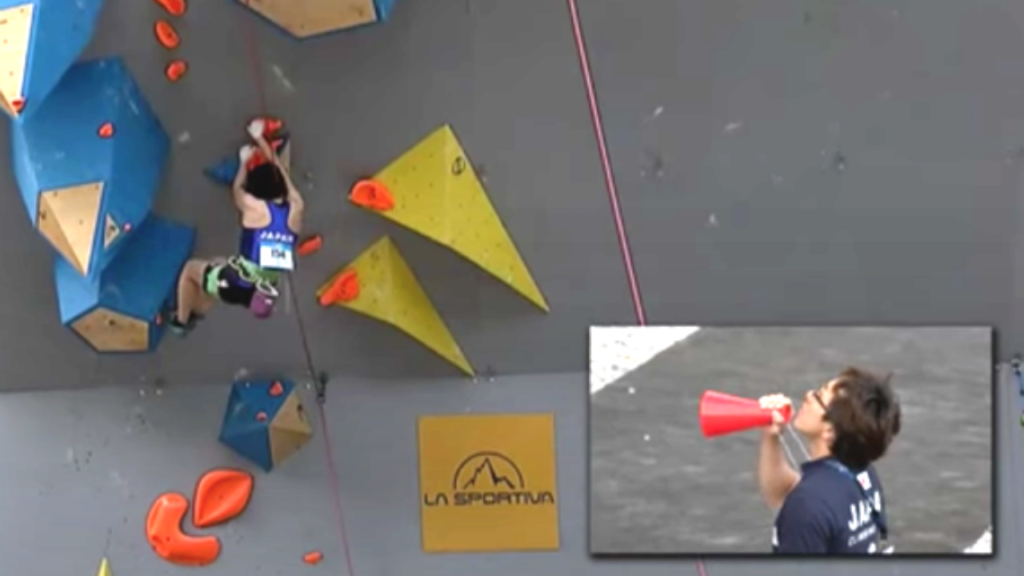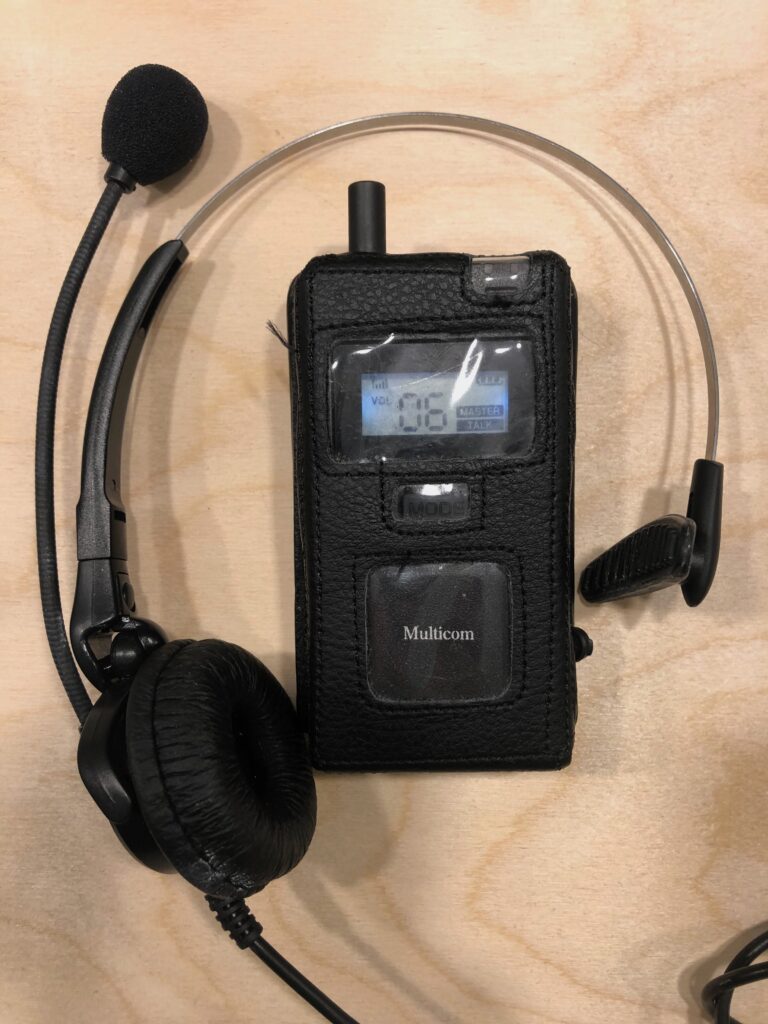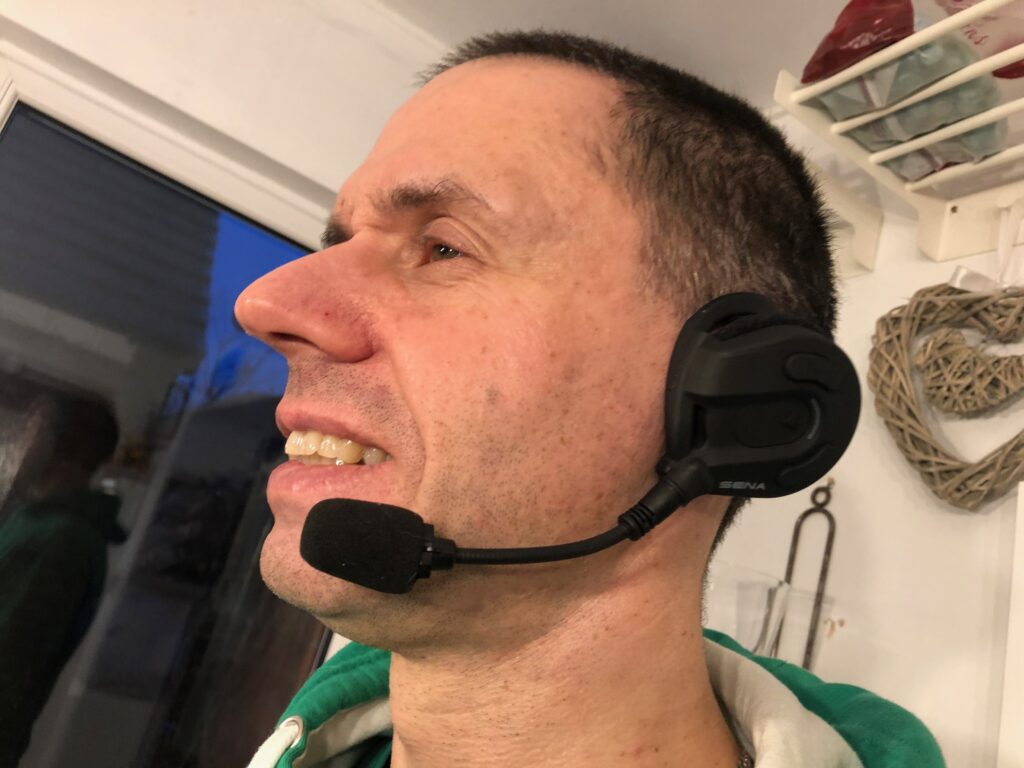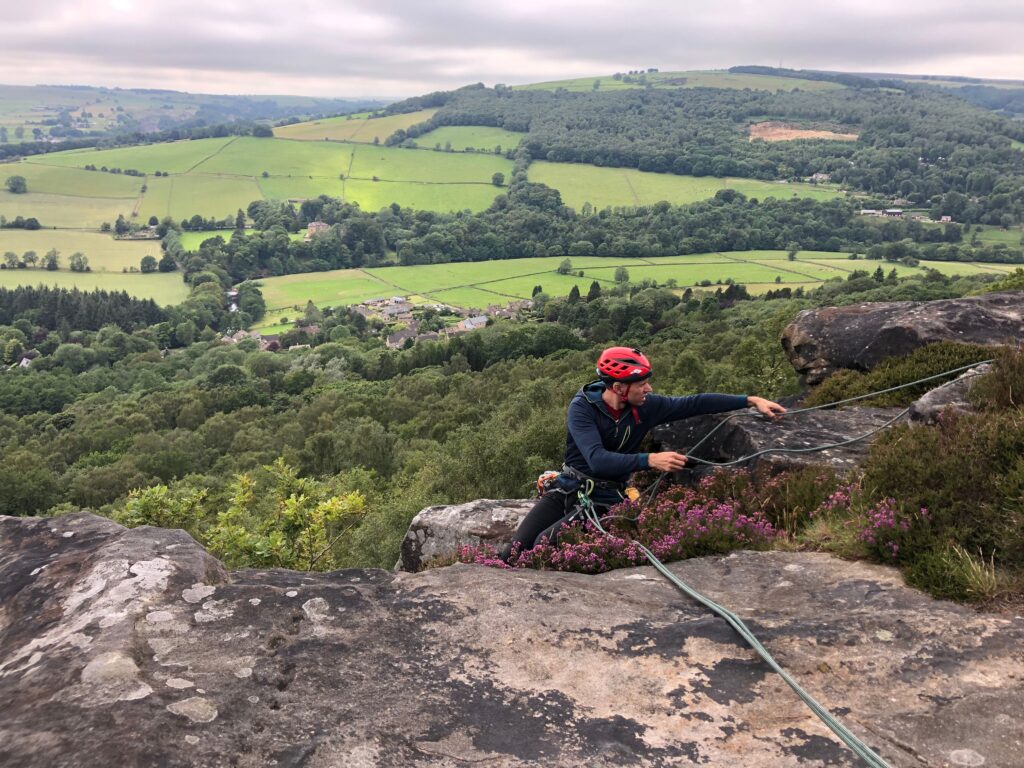Contents
- Introduction
- Mobile phones
- Dedicated 2-way systems
- In depth: Swatcom Multicom
- In depth: SENA expand boom
- Loop systems
- Walkie-Talkies
There are a surprisingly limited amount of communication systems out there that work well in a climbing environment. Any communication system needs to be simple, reliable and have hands-free operation. For bouldering alone just using your voice will probably be enough. If you can talk to each other without having to shout then a communication system probably isn’t necessary. We have a few options available to us but for bouldering we don’t often use them.
If you are starting to shout or struggle to hear each other then it’s worth exploring other options. If you have seen the Japanese team climb then you will know their low-tech solution is a cone. In a noisy climbing centre this will have limitations and will probably annoy fellow climbers.

We have covered all of the options we know and have experience of in this guide but there may be more we don’t know about. If you’d like to let us know about a headset you have experience of please contact us.
Mobile phones
Mobile phones are one of the cheapest ways to get started without a dedicated comms system. Phones themselves are not cheap, but as most people own one, there will be little or no additional outlay. Using headphones is a very good idea and wireless ones are less likely to get caught but could fall out. Wired earphones can do the job perfectly if carefully tucked underneath clothing.
Zipped pockets or an empty closed chalk bag is an ideal place for the phone. On the whole, using a phone can work very well but is dependent on having good signal. Climbing walls can become very busy during competitions and this could affect the reception which is something to keep in mind.
For casual climber where the consequences of call drop out is minimal then using a phone will most likely be fine. If you are worried about damaging expensive phones, are interested in competing or are looking to venture outside, a dedicated headset could be a worthwhile investment.
Dedicated 2-way systems
2-Way (full duplex) systems are most popular with competition climbers. We have experience with 2 different systems: The Swatcom multicom and the SENA expand boom. John has also tried some cheaper systems used by motorcyclists which didn’t work at all. The benefit of these kinds of systems is that they have good battery life, are reliable and work well indoors and outside. It’s essential for sight guides to be able to provide information to climbers but the 2-way aspect also allows the climber to quickly ask the sight guide for a different hold if the route hasn’t quite been read properly. It’s also handy for having a chat on warm up routes and having secret conversations!
The downside with these systems is that they rely on line-of-sight and if for any reason climbers and sight guides go out of sight of each other there is a risk of losing contact. This is a common problem outside when topping out on trad routes. Inside, when in direct line of sight these systems are incredibly reliable.
The Swatcom Multicom 1

The Swatcom Multicom is an industrial radio system that has proven to be very reliable in climbing. Indoors, John’s headset has never let him down. The radio unit and headphones with mic are separate which allows you to customise your set up with different Swatcom headphones. Out of the box the unit comes with a perfectly good set of headphones which we continue to use outside as they fit very well with a helmet. Inside we use a slightly upgraded pair which sits over the top of your head.
Price
Roughly £1000 for a set of 2
Available from Talking Headsets
Features
- Up to 5 users in full duplex
- 400 meters line of sight range
- Dust protection & water resistant (IP54)
- 10 hour USB rechargeable battery
Pros
- Very reliable indoors
- Availability of different headset options
- Small and lightweight
- Long battery life (8-10 hours)
Cons
- Doesn’t automatically reconnect if the connection is lost. It’s not hard to do, but it does require a button push which isn’t always easy on a route outside.
- Expensive (£1000 for a set)
Indoors these headsets work perfectly but outside, when line-of-sight is lost, they do drop out. This in itself is completely expected but we think it would be nice if they automatically reconnected without having to press any buttons.
SENA expand boom

SENA typically make bluetooth communication systems for motorcycle riders but the Expand boom has been designed for adventure activities. Unlike the Swatcom, the Expand boom is an all-in-one headset. It’s all built into the headphones. These headsets have 2 speakers and an audio based menu which is relatively easy for visually impaired people to use. We have found the range to be considerably less than the stated 900m but still more than enough for climbing.
Price
Roughly £300 for a set of 2 (sold individually)
Features
- Up to 4 users
- 900 meters advertised range
- Water resistant
- 10 hour USB rechargeable battery
Pros
- No wires
- Automatically reconnects after a connection drop out
- Cheaper than some other options
- Easy to use for blind people
- Long (10 hour) battery life
Cons
- Range is considerably lower than the advertised 900m
- Sound quality drops off near the limit of the range
- The headset is non adjustable
Loop systems

Deaf or deafblind people may already have access to hearing loop system. They are usually used in education to allow students to hear their teacher more easily. These can be connected to hearing aids, hearing hooks or headphones. Loop systems only offer one-way communication and are quite expensive but if a climber already has one, it might be worth giving it a try. They can work well, but only offer one-way communication. They can be worn with headphones or ‘ear hooks’ which are compatible with hearing aids.
Walkie-Talkies
Walkie-talkies may seem like a reliable choice which would address the problem of drop-outs outside. That said they are not without their own drawbacks. Walkie talkies can be operated with either a button or headset using VOX. VOX stands for voice activated transmission. There is always a delay from pressing the button or VOX kicking. At best this can mean a delay or at worst, important information being clipped. Outside they are a useful backup and are particularly helpful at times where the Swatcom or SENA drop out (at the top of the crag).

